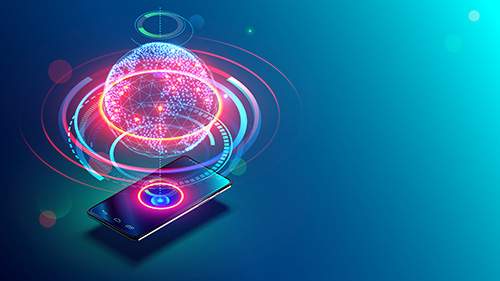Turning Technical Signals into Business Outcomes with Domain-Aware Observability
- Sep 2, 2025
- Blogs
- 7 min read
Imagine this,


Fig 1: Why is Domain context in alerts important?
What brings this change in observability? Domain and Business Context
Why Domain and Business Context Matter
Traditional observability fails enterprises by often starting bottom-up (logs -> metrics -> traces -> dashboards), delivering technical metrics such as CPU usage, network latency, and error rates. While important, these metrics rarely explain the business impact when something goes wrong.

Fig 2: The domain context gap
What enterprises need to know is: What did the customer experience? What was the business outcome? But how do you get the business impact?
Domain knowledge already present in your observability data, combined with business context, provides that answer. It transforms “something failed” into “this failure delayed loan disbursals for 2,000 customers,” helping SREs, support, and business teams prioritize effort, communicate clearly, and resolve quickly.
For financial services, especially banks, this shift is critical to:
- Meeting stringent regulatory and compliance requirements
- Retaining demanding customers whose experience directly impacts revenue
- Managing nuanced risk in a complex ecosystem of customers, partners, and authorities.
- Mitigating the rising threat of fraud in digital transactions
Domain and business context elevate observability from reactive firefighting to proactive business enablement.
Business observability makes this shift possible as it naturally extends domain context into IT operations. It provides a real-time, multi-layered view of business systems.
How Business-Centric Observability Adds Domain and Business Context
By embedding domain knowledge and business metadata (KPIs, SLAs, customer journeys, financial indicators) into data at the source (and not at the time of analysis), business observability platforms can convert technical signals into actionable business intelligence in real-time. Here are the ways it achieves this:
| Data Correlation | Connecting and enriching disparate technical events (like downtime, error raters) with business outcomes (like revenue loss, SLA breaches) in real-time |
| Contextual Metadata Enrichment | Tagging each event/transaction with relevant business metadata such as user journeys, product lines, risk categories, or regulatory requirements |
Fig 3: Business Meta Data used for enriching telemetry data | ||
| Continuous Monitoring and Training of AI models | Feeding up-to-date context-rich operational and process data (like transaction failures, SLAs, and customer impacts) that help AI models adapt to business and regulatory changes. |
| Dynamic KPI Tracking | Providing real-time dashboards and alerts that help models learn the actual business impact of technical or operational changes. |
How VuNet Delivers Domain and Business Context
VuNet believes the only way to make observability truly business-aware is by infusing domain and business context at source – while data is ingested. Data thus enriched with domain context helps answer: What did the customer experience, and what was the business impact?
At VuNet, adding domain context to data is embedded by design in our platform and products. In our platform vuSmartMaps™, raw telemetry data (logs, metrics, events, traces) is contextualised with domain and business context using three powerful components: Domain-Aware Agents, Domain-Centric AI Models, and Journey Workbench.
- Domain-Aware Agents
Our platform offers pre-built agents and session plug-ins that have been built with a deep understanding of industry-specific business processes and in compliance with industry standards such as payments, core banking, ISO 8583, ISO20022, asynchronous service calls, etc. These agents, forming a part of our platform’s contextualization component, enrich the raw MELT data with rich context, including business, domain, semantic, syntax, and state. The data contextualised by these agents helps in:
- Context-aware alerting: Alerts are enriched with business impact before reaching operations teams.
- Intelligent monitoring: Agents track what truly matters — SLAs, TATs, customer journeys — rather than just infrastructure.
- Business-driven automation: Agents can even trigger remedial actions while respecting business rules and priorities.
Data Layer | Context Embedded |
Logs | RRN, App ID, Channel, Transaction Type, Status, Error Codes |
Metrics | Service latencies by transaction stage |
Traces | User flow mapped to business journey (e.g.: Auth + Confirm + Fulfill) |
Events | User actions) retry, drop-off, switch channel) |
Metadata | Device, PSP, Account Tier, Risk Score, Geo |
Fig 4: Context added by domain-aware agents to MELT data

Fig 5: Examples of insights from domain contextualized data
- Domain-Centric AI Models
Once data is contextualised, domain-centric AI and ML models in vu3T engine (our platform’s patented correlation engine) applies real-time business intelligence on top of telemetry data to extract semantic signals that provide:
- Smart storyboards: Providing unified business-technical visibility
- Intelligent insights: Linking technical anomalies (e.g., API failure) with business impact (e.g., loan application drop-off, reconciliation mishaps).
- Predictive business intelligence: Forecasting risks like SLA breaches or revenue impact before they occur.
- Automated decision support: Guiding rerouting, throttling, or remediation with an understanding of business constraints.
- Continuous learning: Improving the accuracy of insights with every new data pattern.
- Journey Workbench (JWB)
VuNet’s Journey Workbench acts as a context engine that maps technical signals to business logic:
- Mapping telemetry data across each stage of a transaction journey (such as CBS logs, PSP APIs, payment switches) and enriching with transaction IDs, SLAs, and customer tiers.
- Visually defining transaction journey graphs, such as UPI, loan disbursal, or eKYC, to trace failures back from customer experience to root cause.
- Feeding the context-enriched data into our platform’s AI/ML engine and Ved (VuNet’s GenAI co-pilot) to provide proactive recommendations and automated fixes.
In addition, VuNet’s domain-centric approach provides a unique feature that goes a step ahead in making observability intuitive and easy.
- User Experience Index: VuNet’s User Experience Index goes beyond system health to measure real customer experience by combining synchronous/asynchronous turnaround times and success rates. Coupled with AI models, it enables:
- Predicting user experience degradation before business outcomes are hit.
- Identifying hidden patterns in transaction flows that indicate potential issues.
- Delivering actionable insights that business stakeholders can act on directly.
By combining domain-aware agents, domain-centric AI models, and JWB, VuNet ensures that observability never stops at system health. Together, these three pillars make VuNet’s business-centric observability platform not only domain-aware but business-centric, helping enterprises move from technical monitoring to assuring business outcomes.

Fig 6: Comparison of Domain-Infused AI vs. Generic AI
Future of Domain Context in Observability
The future of observability lies in making systems not just technically intelligent, but domain- and business-intelligent by default. Here are the key trends shaping the evolution of how domain context:

Fig 7: Future of domain context in observability
Conclusion: Turning Telemetry data into Business Outcome
Technical metrics tell you what’s wrong.
Domain context and business knowledge tell you why it matters.
Business observability fuses the two — transforming raw signals into actionable insight.
It ensures every action is timely, relevant, and business-aligned.
In financial services, where milliseconds mean millions and trust is non-negotiable, the difference between generic observability and business-centric observability with domain context isn’t just operational — it’s existential.
Enterprises that invest in clean, structured data and the right domain context can see not just what is happening, but why and act with precision.
Talk to us to see how VuNet can help you elevate your data to deliver deeper insights aligned with business outcomes, aligning IT operations, business teams and leadership around the metrics that truly matter.



















